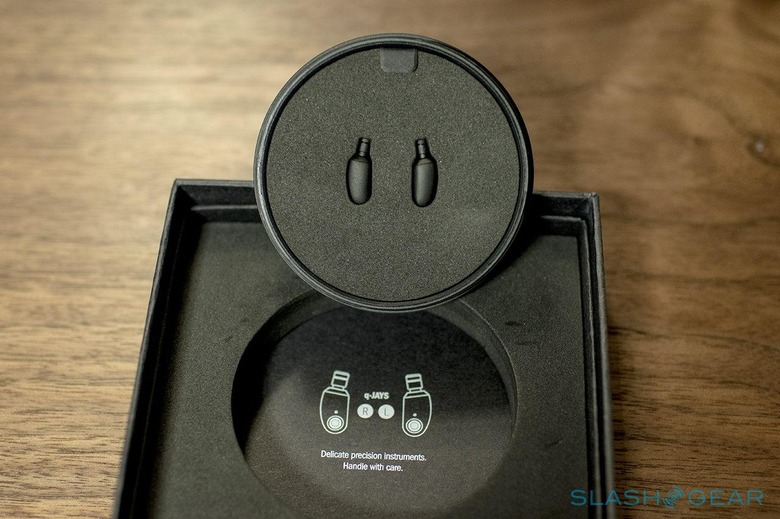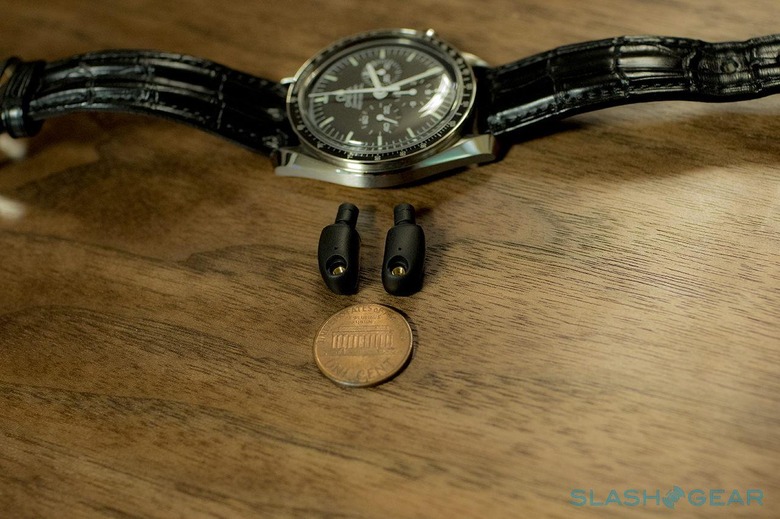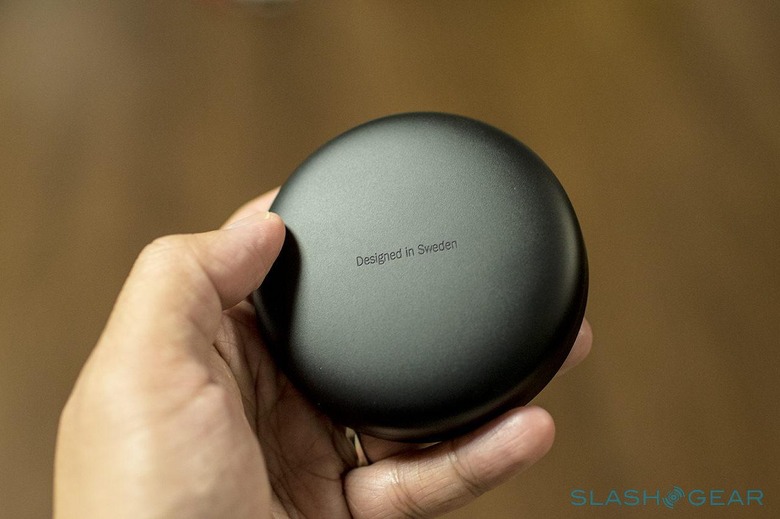Jays q-JAYS IEM review - a second shot at excellence
- Premium build quality
- Firm, tight bass
- Excellent mid-range and treble
- Good Isolation
- High treble peaks
- High price tag
Apple's forced demise of the 3.5 mm headphone jack has ironically brought headphones and earphones into the spotlight, with many wondering whether wired audio accessories are still worth their salt. Audiophiles and audio professionals will wholeheartedly agree, and the second gen q-Jay in-ear monitors from Jays is one prime example. By no means an inexpensive purchase, the q-Jays quickly pays for itself in the priceless joy of having a pair of earphones that deliver outstanding quality, clarity, and fidelity worthy being called Jays' most precise reference earphones.
Packaging and Design
For an accessory that is meant to be inconspicuous, design is ironically just as important as the output quality, especially in terms of comfort and durability. For something of its price tier, the earphones better sound *and* look great. Conversely, the attention paid to detail, reflected in the design of both the headphone itself as well as the packaging, pretty much makes that price tag worthwhile.
The packaging of the q-Jays follows the same premium theme as the IEMs themselves. Instead of a simple classy box, you get a classy rounded case which immediately showcases the detachable monitors alone. Yes, detachable, which we'll get to shortly.
Included in the packaging are six pairs of silicone and Comply foam tips that ensure a comfortable fit for any size or preference. Separate from everything else is the exchangeable cable that you can get in a variety of types, depending on your smartphone of preference, or a generic line for any type of audio source.

Jays has learned its lessons from the first q-Jays quite well. While still just as small as its predecessor, the new in-ear monitors are now housed in strong yet light stainless steel housing. The cable follows that motif as well, as thin as that of any regular headphones and yet durable with a coating of kevlar.
The cable screws to the monitors via an SSMCX coaxial connectors, touted to be the smallest in the world, testifying not only to manufacturing quality but also a commitment to delivering quality audio that only a high-quality wire can.
All in all, the q-Jays design means you won't have to fret about accidentally breaking your $300 investment at every snag, drop, or accident. And, of course, they look stylish in any occasion as well.
Audio Performance
If the q-Jays were simply a fashion accessory, we could probably end the review here. But this admittedly pricey is a lot more than that. It is, first and foremost, a reference earphone. And fortunately even and especially in that regard, it steps up to the task with excellence.
When it comes to in-ear headphones, especially balanced armature types, bass has always been a weak point. While the q-Jays do exhibit some of that by nature, it still performs admirably better than most of its rivals on the same price range.
Unlike others, the q-Jays delivers deep and firm bass, with enough body and punch to make it felt strong enough. It is, however, also a bit light to the point that bassheads might walk away disappointed.
The higher tones of the mid-range and treble is where it's at. It delivers the kind of rich and realistic tonality that few IEMs have proven to be capable of, giving credence to Jays' claims of a true reference earphone. And while this makes acoustic instruments on mids really pop out, it is the vocals that are given a stronger presence thanks to its forward effect.
There can, however, be too much of a good thing, and this is perhaps one of the q-Jays few defects. It places a tad too much emphasis on the treble, failing to dampen the higher ranges. It gives off the feeling of delicateness, but without really going so far as sounding thin. It is a flaw that seems to be characteristic of other in-ear monitors and one that can at least be rectified with the right eartips.

The q-Jays naturally offer only passive isolation, which means it won't really compete with headphones that have active noise cancellation. That said, the IEMs still offer above-average isolation, which is still impressive given how small the earphones are.
The q-Jays doesn't exactly have a huge soundstage, which is typical of its kind, but it doesn't sound congested at all, with projection and instrument separation all within an acceptable, even above acceptable, range.
Bass is tight but a bit on the light side, while treble teeters almost to the thin line. Depending on your type of music, that might not matter much. If you dig vocals or jazz, the q-Jays will be a perfect fit, literally and figuratively.
Wrap-up
While the q-Jays themselves can work with almost any audio source, Jays also offers different cables for different devices. The Audio-only cable will get you a simple, straight, no fuss cable. But you can also take your pick from iOS, Android, and even Windows options that add a remote box along the line for controlling volume.

As you may have already guessed, all of these come at a high cost, higher than usual for a "nice" pair of earphones and even double that of the previous q-Jays model. It is, however, not unusual for high-grade, high-quality audio accessories such as these.
Given how the q-Jays performs well on almost all frequency ranges, all except perhaps for bassheads will be able to squeeze out every bit of enjoyment from this pair. And given its timeless look and durable build, it will be a pair that will probably last them until the day wireless audio takes over all.
